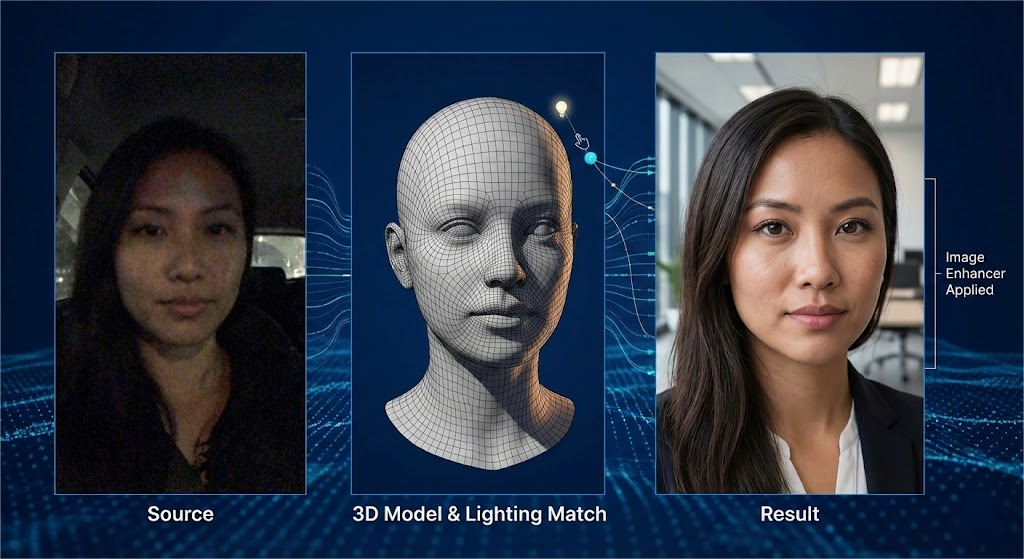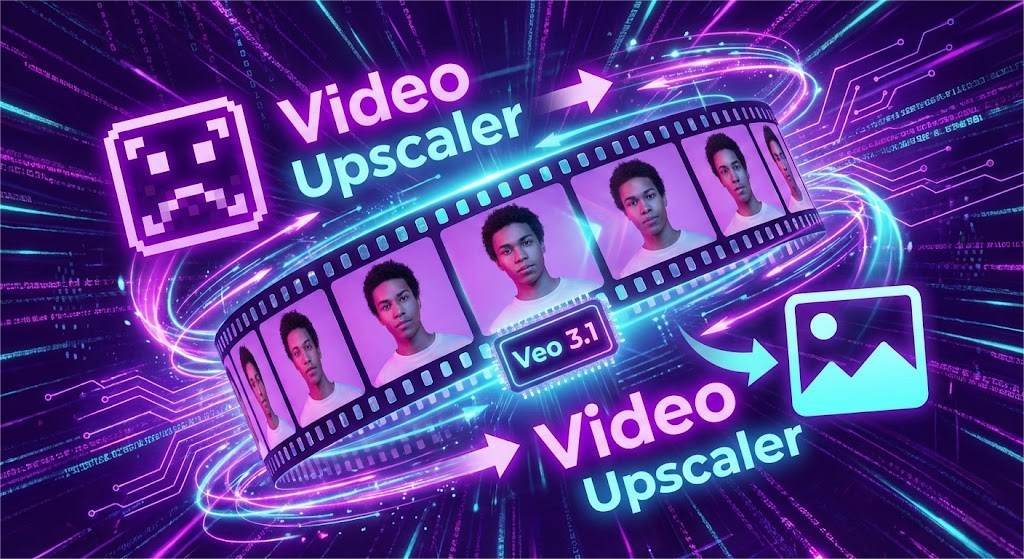The Ultimate Guide to AI Face Swap Technology: Mastering Image and Video Transformation for Digital Creators
In the rapid development of digital media environment, AI face swap technology has become one of the most innovative tools for creators, fundamentally changing the way we tell visual stories and content localization. No longer limited to high budget movie studios with a huge visual effects team, now anyone who uses a web browser can seamlessly replace their identity. Whether you are a professional video editor seeking to fix the wrong corner selection, or a marketer aiming at localized advertising activities for different groups, or a social media enthusiast creating viral content, it is crucial to master the art of exchange. This comprehensive guide is your navigation roadmap in the synthetic complex world driven by AI. We will go far beyond the basic knowledge and study the technical details of image AI face swap mechanism and the computational challenges of AI video face swap consistency. In addition, we will explore the key ecosystem of support tools, from image intensifiers to voice cloning functions, and upgrade simple exchange to professional production. At the end of this article, you will learn how to use these powerful neural networks to unlock unprecedented creative freedom.

The Mechanics of Static Reality: Precision in image AI face swap
The concept of superimposing one face on another has existed in the early days of darkroom photography, but modern AI has transformed this manual and labor-intensive process into an automated and pixel perfect art form. Image face exchange is not only a "cut and paste" operation; This is a complex algorithm dance involving the generation of a GAN. When you start to exchange, AI will first detect the face, usually drawing 68 or more different facial signs, including the curvature of the mandible line, the distance between the eyes and the depth of the bridge of the nose. Then, it builds the geometric mesh of the source face and twists it to align with the pose of the target. However, the real sign of high-quality photo face exchange is the synthesis of lighting and texture. AI must analyze the ambient light direction, shadow and color temperature of the target image, and re illuminate the new faces through mathematical methods to match. If the source's skin color is different from the target's body, the algorithm will perform a complex color grading to seamlessly integrate the neck and hairline, preventing the "mask like" appearance of early deepfake attempts. Although there are advanced algorithms, the quality of raw materials is still a common bottleneck. Generally, the resolution of the source face provided by the user is lower than that of the target professional photography, resulting in blurred or pixelated results. This is where the integration of image intensifiers becomes a non-negotiable part of the workflow. A powerful intensifier uses a magnifying model to invent missing details, sharpen eyelashes, refine skin pores, and clarify the iris pattern to ensure the high fidelity match between the exchanged face and the background. Tools such as the background remover AI have made a thorough change to this workflow. It can immediately isolate topics, and even in a chaotic environment, it can carry out a clean exchange. For e-commerce, it's a factor that changes the rules of the game; Now brands can use image face exchange to dynamically change models in their product catalog to represent different races, without having to re shoot the whole series of logistical nightmares. Being able to manipulate the static reality so precisely, you can restore the retro family photos, create a professional leader's head from the leisure selfie, and generate marketing assets that resonate with specific cultural groups. When we improve these static tools, the boundary between photography and image generation disappears. We need to have a keen insight into details and master post processing enhancement.

Mastering Motion: The Complexities of AI video face swap and Upscaling
Converting from a static image to a dynamic image will make the computational complexity grow exponentially, making AI video face swap the real frontier of generative AI. Different from a single image, video is a sequence composed of thousands of individual frames, which must be rendered with time consistency. The main challenge here is "shaking" - if AI can't accurately track facial signs, even if it's only a fraction of a second, the face will vibrate or separate from the head, breaking the illusion immediately. The professional AI video face swap engine must maintain the structural integrity of the face when the subject speaks, turns his head or moves under changing lighting conditions. This requires an advanced optical flow algorithm to predict the movement between frames to ensure a smooth transition. In addition, dealing with occlusion - such as waving hands in front of the face or hair falling on the eyes - distinguishes amateur tools from professional software (such as VEO 3.1 model), which aims to understand the depth and level of the video scene. Because it requires huge processing power to generate realistic faces for each frame of the video, the original output is often affected by compressed artifacts or reduced resolution. In order to solve this problem, the toolkit of modern video editor must include video upgrades and video intensifiers. These tools act as polishing agents; They analyze the exchanged lens, remove digital noise, and improve the resolution from 720p or 1,080p to a clear 4K. This is crucial for the content of large screen or high-definition streaming media platform. In addition to simple enhancement, we also saw the rise of video role replacement. Ai not only exchanged faces, but also adjusted the head shape and hairline to more naturally adapt to the new identity. In addition, the environment around the theme is often also plastic. With the video background remover, creators can transfer their exchanged roles to a new virtual studio or fantasy world, without needing a physical green screen. This combination of exchange, upgrading and environmental manipulation enables a single creator to produce movie level content that previously required Hollywood budget. The synergy between the exchange engine and the video intensifier ultimately sells the authenticity of the clip, ensuring that the pixel density of the face matches the clarity of the surrounding video elements.
Creative Expression:GIF face swap, Voice Cloning, and Emotional Control
Although realism is the goal of enterprises and film applications, Internet culture flourishes in humor, relevance and exaggeration. This is where GIF face swap technology dominates in the field of social media. GIF is the currency of digital emotion. It can insert one's own face or a friend's face into a popular meme, which can create a personalized participation degree that text cannot achieve. Because GIF is cyclical and usually stylized, they allow more creative freedom. However, the next development of this technology goes beyond simple identity exchange; It involves the deep manipulation of the subject behavior. Advanced AI tools now have facial expression changers that allow users to change the emotional background of photos or videos taken in the later period. Does your subject look bored in key shots? AI can adjust the micro muscle tissue around the eyes and mouth to simulate the real smile or surprised expression, thus eliminating the need for re shooting.
However, when it comes to full immersion, visual exchange is only half of the success, especially in video. In order to make the exchange truly convincing, especially in terms of narrative content or marketing localization, the audio must be consistent with the new visual logo. This is where voice cloning and lip synchronization technologies become indispensable. Imagine making a localized version of an English marketing video for Spanish audiences. Using video face exchange can create visual effects, but voice cloning technology can synthesize the voice of the original actor speaking Spanish. Then, the lip sync AI analyzes the new Spanish track, and deforms the mouth of the video subject to perfectly synchronize with the new words. This kind of "full stack" synthesis creates a seamless experience, and the audience is often unable to recognize that the content is dubbed. In addition, creative tools like nano-banna Pro style are emerging, which can apply art filters and stylized rendering to these exchanges, so as to achieve a unique visual signature. By combining GIF face swap for fast social interaction with lip synchronization and expression control for long content, creators can build a consistent and multi-functional digital role beyond language and physical location.

Professional Standards: Ethics, Workflow, and the faceswap-ai.io Ecosystem
As we embrace the infinite potential of generative artificial intelligence, we must also adhere to strict professional standards and ethical considerations. The power to change reality comes with the responsibility to use these tools transparently and legally, avoiding deep fabrication or misleading information without consent. For professionals, the credibility of an exchange also depends on the cleanliness of the final output. Nothing destroys the credibility of commercial videos faster than the lingering logos in free tools; Therefore, a reliable watermark remover is a key component of the professional workflow, ensuring that the final deliverables are original and brand independent. The industry is rapidly shifting from disjointed tools to a comprehensive ecosystem that handles the entire production pipeline. A typical high-end workflow may involve using video character replacement to shape digital actors, optimizing visual effects with a video scaler, and finally using a watermark remover to polish playback assets.
This is where platforms such as faceswap ai. io stand out as key hubs in the creative process. By centralizing access to high-performance engines for facial swapping, enhancement, and audio synthesis, faceswap-ai.io eliminates the friction of switching between multiple disconnected applications. It allows creators to try cutting-edge features such as video background removers within a unified interface, place themes in impossible locations, or use image enhancement tools to save low-quality client assets. Looking ahead to the future, we can expect closer integration where artificial intelligence can not only exchange faces, but also predict lighting changes in 3D space and automatically generate matching audio environments. As these tools become more intuitive, the threshold for entry will decrease, but the upper limit of mastery will increase. Those who learn to coordinate various tools - from photo face swapping to complex video enhancer workflows - will define the next generation of digital media. The future belongs to those who can seamlessly integrate human creativity with artificial intelligence precision, and it all starts with choosing the right platform to achieve your vision.
